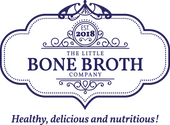What does collagen actually do for you?
Everyday, when we exercise, work, rest or even sleep, our bodies are in the process of consuming and producing the materials needed to keep us alive. Collagen is one of those necessary ingredients that play such a vital role in helping us functioning, right down at the cellular level. This all-important protein forms part of the connective tissue of skin, allowing our cells to stretch and retain their natural strength.
Naturally, the body synthesizes its own collagen, called exogenous collagen, which it recycles and supplies to all skin cells, as well as to our bones, muscles and tendons. However, this synthesized collagen relies on an outside source, made from the food we eat. Which is why those with a diet low in collagen often have visibly paler, thinner skin, as well as stiff joints, loss of energy, brittle bones, wrinkles and muscle aches.
If the above symptoms also sound like those of old age, there’s a reason; the body produces less collagen as it gets older. The process of collagen loss can’t be stopped altogether — but it can greatly be improved by what we eat.
In this article, we’ll briefly go over how you can adopt more collagen into your diet while still serving up delicious meals.
Managing your protein intake
The body doesn’t just process one protein, but eight separate proteins, all of which perform needed functions for maintaining the body’s health. Our friend collagen belongs to the structural protein group, along with keratin and elastin. This group improves your connective framework, giving you the elasticity needed for a healthy, functioning body. Other proteins form different roles, either as transporters carrying nutrients around the body, storage proteins and even defensive proteins which protect our immune system. All play a vital role in keeping your body ticking along.
Foods rich in collagen-producing proteins are those that aid the connective tissue — namely chicken, but also beef, bones, fish and egg whites. Certain vegetables, fruits, salads, beans and nuts will also hold collagen properties too, but not as concentrated as in meats.
Balancing other health concerns
Of course, eating one food exclusively for some of its benefits has other drawbacks. Chicken typically is high in sodium — around 2300mg of the stuff can be found in one breast of normal chicken. This is around 1100-900mg more than an adult should typically be consuming a day.
Natural, organic chicken or grass-fed beef is much lower in sodium, which means a single serving has about the right amount of sodium intake, plus all the collagen you need.
Adding collagen to your everyday
Generally the recommended amount of collagen per day isn’t terribly high — around 1,000-1,500mg per day. You can easily get this from eating chicken for just one meal.
However, if you want to spice up your dish with something healthy, which is low in fat and easy to consume, bone broth might just be the ingredient you’re looking for.
Bone broth is made by boiling away meat, bones and connective tissue, utilizing more of the animal than would normally be consumed. Along with collagen, preparing meat in this way brings out lots of the calcium, magnesium, phosphorus, glucosamine, chondroitin, amino acids and other nutrients found within bones and connective tissue.
Does bone broth just use the bones?
Bone broth can be made with bones alone, but often uses meat or leftover meat offcuts. The reason it’s called bone broth is because the broth is able to bring out the nutrients that are locked within the bone itself. Chicken feet, for example, are full of delicious connective tissue and so make great collagen-packed bone broth.
Preparing bone broth
Bone broth is typically prepared by being boiled for days in a large pot, along with vegetables, herbs and anything else that you can think of to flavour the broth. Bone broth can be prepared quicker in a pressure cooker, but to really soak out the flavour a slow cooker is preferred.
Bone broth recipes
Bone broth can accompany a myriad of dishes, or be served in a cup on its own as the perfect broth drink. Broth can be served as a soup to raise the flavour or as a sauce to cover risotto, spice up your orzo pasta, enliven your panade, bring the best out of your lentil dish, accompany your slow cooked chilli, make your salad dressing, add more flavour to your chicken or beef dish or even bring a unique twist to your breads and baked goods. Thai soups in particular rely on bone broth to give them their consistency and rich underlying aroma. You can find some of our favourite recipes on our Facebook page, updated regularly.
Ensuring your daily dose of goodness
While preparing bone broth is a time consuming process, we at The Little Bone Broth Company are more than happy to boil away pots of broth all day. We also use only organic, natural chicken and grass-fed beef, so our meat is of the highest, healthiest quality. If you’re looking for a natural source of protein and collagen, as well as other nutrients for your daily intake, bone broth is perfect for achieving a healthy balance.
To find out more, head to our store.
Sources cited:
- “8 Types of Protein” on MealPro. Date Published: 14th April, 2017. Date Published: https://bit.ly/3eFfHNy.
- Brennan, Dan. “Healthy Foods High in Collagens” on Nourish. Date Published: 22nd December, 2020. Site Link: https://wb.md/3VAQy7d.
- “How Much Sodium in a Chicken Breast?” on Cooking Tom. Date Accessed: 18th October, 2022. Site Link: https://bit.ly/3MEdxKA.
- Marengo, Katherine. “13 Foods That Help Your Body Produce Collagen” on healthline. Date Published: 26th February, 2020. Site Link: https://bit.ly/3eEuPL2.
